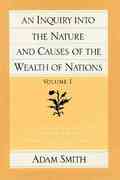Question
Part I: Please answer the following three questions.1.Not all exchange-rate pegs are created equal! In this question you will explore trends in exchange rates. Go
Part I: Please answer the following three questions.1.Not all exchange-rate pegs are created equal! In this question you will explore trends in exchange rates. Go to the St. Louis Federal Reserve's Economic Data (FRED) website at https://research.stlouisfed.org/fred2/ and download the daily United States exchange rateswith East Caribbean dollar, India rupee, and Mexican peso from 1995 to the present. These can be found most easily by searching for the country names and "daily exchange rate." (10 points each; 40 points total)
A, Plot the Indian rupee to the U.S. dollar exchange rate over this period. For what years does the rupee appear to be pegged to the U.S. dollar? Does peg break? If so, how many times?
B. How would you characterize the relationship between the rupee and the dollar from 1998-2008? Does it appear to be fixed, crawling, or floating during this period? How would you characterize it from 2008 onward?
C,.The East Carribean dollar has maintained its peg with the United States dollar since 1962.Over the course of the period downloaded data what are the highest and lowest values forthis exchange rate?
D, Mexico has been less successful in its attempts to fix the peso against the US dollar. Since 1995 how many times has the Mexican peso peg to the U.S. dollar broken? What isthe average length of a peg? What is the average size of the devaluation?
2, Using diagrams of the money and foreign exchange markets to answer the following questions about the relationship between the British pound () and the U.S. dollar ($). Focus on the exchange rate between the U.S. dollar per British pound (E$/). We want to consider how a change in the U.S. money supply affects interest rates and exchange rates.In all figures, label the initial equilibrium A
A, Illustrate how a permanent increase in the U.S. money supply affects the money and foreign-exchange markets. Label the new short-run equilibrium point B.
B, Using your diagram from (a), state how each of the following variables changes in the short-run (increase, decrease, no change): U.S. interest rate, British interest rate, E$/, E$/e, and U.S. price level. Please summarize your results in a table.1 3.You are given the following information. The current spot exchange rate is U.S. $1.33 per pound sterling. A basket of goods th
Step by Step Solution
There are 3 Steps involved in it
Step: 1

Get Instant Access to Expert-Tailored Solutions
See step-by-step solutions with expert insights and AI powered tools for academic success
Step: 2

Step: 3

Ace Your Homework with AI
Get the answers you need in no time with our AI-driven, step-by-step assistance
Get Started


